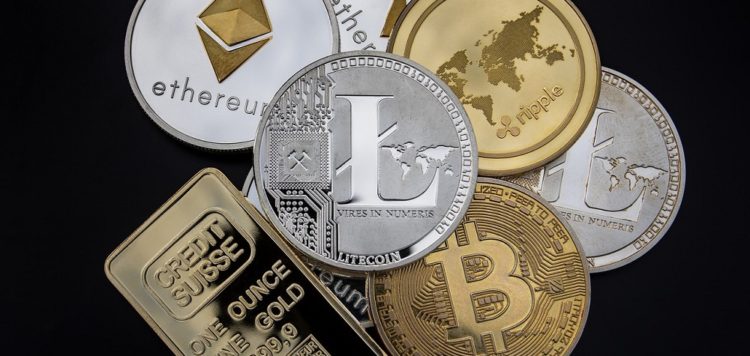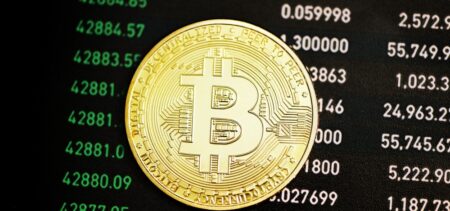Cryptoassets (digital assets using blockchain technology) have seen explosive growth since the outbreak of the financial crisis in 2008. Libertarian orientations, which reject governments/public authorities (central banks), equate cryptoassets (also known as cryptocurrencies) with a decentralization of the financial system, ensuring anonymity in transactions, transgressing regulations and borders, exchange rate risks etc. In my opinion, it’s not the political philosophy that matters in the first place, but the phenomenon itself and its implications. Today I’m going to show you why the regulation of cryptoassets is proving to be hugely important for governments and central banks.
Why Stablecoins Are on the Rise
Because the volatility of cryptocurrencies is extreme (see Bitcoin), stablecoins have emerged, which rely on currencies issued by central banks and financial assets perceived as relatively stable. Stablecoins can be considered synthetic variants of cryptoassets, which aim to stabilize their prices. Cryptoassets, which are highly speculative, have created a major problem for central banks by forming parallel trading circuits. This is just one of the reasons why so many central banks are considering issuing central bank digital currencies (CBDCs). Moreover, the Bank for International Settlements (BIS) has set up a hub for innovation in digital currencies and in the digitisation of the financial system. This is not primarily a competition between digital currencies issued by central banks and cryptoassets. The stakes are much, much higher, and they concern the issue of monetary transmission in the economy as much as financial stability.
Money Transmission and Financial Stability
Cryptoassets can be seen as an expansion of the “shadow banking system”, which escapes regulation and oversight. For years, monetary authorities have been struggling to cope with the expansion of the shadow banking sector, which is made up of non-banking entities (e.g. investment funds, high-tech giants) offering banking and other financial services. The problem is linked not only to poor regulation but also to the effectiveness of monetary policy: the link between the monetary base issued by a central bank and the amount of currency (which has as counterpart the volume of credit, other financial services) circulating in the system.
To the extent that cryptoassets are perceived as means of payment and money-saving, one can speak of an expansion of transactions that is no longer mediated by the money supply itself, but by means of payment instruments improperly called quasi-money. Inherently affected is the monetary transmission process, the central bank’s power of control over the monetary process in the economy through the creation of outside money and the monetary policy regime. Cryptoassets add parallel circuits to regulated markets and can complicate monetary transmission. Presumably, new monetary policy strategies will take into account the parallel circuits created by cryptocurrencies.
Closely related to the issue of monetary transmission is financial stability, which is also affected by Cryptoassets, including variants called stablecoins (Tether is the best known of these). Stablecoins are collateralized by money issued by central banks, sovereign bonds, other financial assets (e.g. commercial paper) that are not as liquid as genuine currencies (the US dollar in particular). In the event of a severe shock to the financial markets, there may be a run on some of the assets behind stablecoins. An analogy can be made with the situation of mutual funds, which were supposed to offer quasi-safe investments with minimal volatility, but which, in times of panic, needed the Fed to intervene in order to prevent them from affecting the stability of the entire financial system. It was then that the US central bank also had to act as an insurer of last resort.
The Return to Free Banking, the High Stake Everyone Is Talking About
Central Bank digital currencies must not be seen as competitors to cryptoassets, although they show the dangerous and risky side of these speculative assets. As some central bankers note, monetary systems have already been largely digitized, with much of the trading being conducted electronically.
Digitization is a process driven by new technologies, trends, the desire of many to decentralize financial systems, and beyond. But the key issue for central banks goes beyond keeping up with the new technology and digitizing monetary creation. The big challenge is to avoid allowing the financial system to develop into a free-banking system, with a detrimental impact on financial stability and beyond. Public money is a public asset on which economic and social cohesion depends. Some argue that free banking will take us back decades, even hundreds of years, and will contribute to what could become widespread chaos.
The profound stability stakes for governments and central banks are heightened by the need to combat money laundering, the financing of terrorism and organized crime, all kinds of fraud, cyber-attacks, and many other threats.
There is also an important geopolitical aspect. I don’t see how, for example, the competition between the US dollar, the Euro, the Yuan, as currencies, would be more fierce, with the full digitization of money creation and the disappearance of cash.
It is not digitization in the financial industry that will dictate the dynamics of global influences, but economic and technological strength, the performance of society in all of its aspects.












































